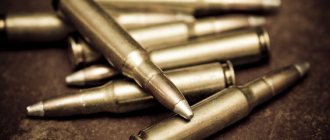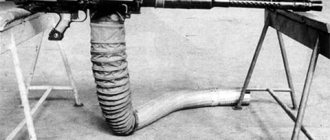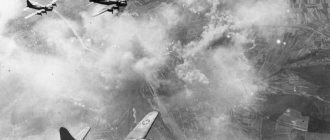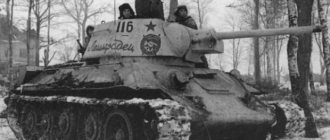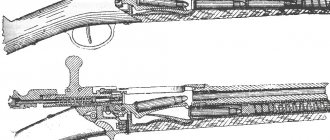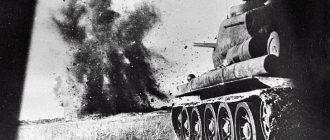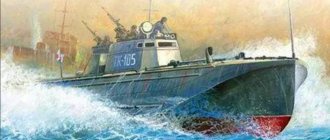On September 2, 1945, Japan signed the act of unconditional surrender, thereby ending World War II. Although some Japanese soldiers continued to guerrilla for many years, and according to the Japanese Embassy in the Philippines, they may still be fighting in the jungle. The fighting spirit of the Nippon army was amazing, and the willingness to give their lives was respectable, but the cruelty and fanaticism, along with war crimes, are extremely controversial.
We talk about what the army of Imperial Japan was like in World War II, what kaiten and Oka are, and why hazing was considered a moral duty of the commander.
Wash the heels of a sergeant for the Emperor - training in the Japanese army
The Japanese Empire at the end of the 19th and beginning of the 20th centuries nurtured ambitions to expand living space, and, naturally, for this it needed a powerful army and navy. And if on the technical side the Japanese did a lot, turning a backward army into a modern one, then on the psychological side they were greatly helped by the warlike mentality that had developed over many centuries.
The Code of Bushido required the samurai to unquestioningly obey the commander, contempt for death and an incredible sense of duty. It was these traits that were most developed in the imperial army. And it all started from school, where the boys were taught that the Japanese were a divine nation, and the rest were subhumans who could be treated like cattle.
The young Japanese was told that he was a descendant of divine ancestors, and his whole life was a path to glory through military exploits in the service of the Emperor and superior officers. Here, for example, is what a Japanese boy wrote in an essay during the Russo-Japanese War of 1904-1905:
I will become a soldier to kill Russians and take them prisoner. I will kill as many Russians as possible, cut off their heads and present them to the emperor. And then I’ll rush into battle again, I’ll get even more Russian heads, I’ll kill them all. I will become a great warrior.
Naturally, with such desires and support from society, the boy grew into a fierce warrior.
The future soldier learned to endure hardships from an early age, and in the army this skill was brought to perfection not only through jogging and exercises, but also through the bullying of colleagues and senior ranks. For example, a senior officer, who felt that the recruits had not given him the military salute well enough, had the right to line them up and slap each one in the face. If the young man fell from a blow, he had to jump up immediately, standing at attention.
This harsh attitude was complemented by ingratiation with higher authorities. When, after a tiring march, the senior man sat down on a chair, several soldiers immediately raced to unlace his shoes. And in the bathhouse there was literally a line lining up to rub the officer’s back.
As a result, the combination of powerful propaganda and education, coupled with difficult service conditions, created fanatical and resilient soldiers, extremely disciplined, persistent and monstrously cruel.
Breda-SAFAT, Italy
In the previous article we talked briefly about the 7.7 mm machine gun of this bicaliber family. Criticizing. So, that machine gun was GOOD! We won’t say the same about its large-caliber brother.
If the 7.7 mm rifle cartridge in terms of muzzle energy was not very different from any other classmates, then the Italians’ choice of ammunition will puzzle anyone, let alone non-experts.
British cartridge 0.50 from Vickers. A very weak cartridge. One might even say, the weakest in the world. Why Mussolini, who was in charge of armaments, rejected the heavier French Hotchkiss cartridge is anyone's guess. But the French cartridge was one and a half times heavier and had more acceptable characteristics. Perhaps this has something to do with the eternal Franco-Italian confrontation.
The only advantage of the Breda machine gun was the presence of explosive cartridges prohibited by international treaty, the 37-gram shells of which contained 0.8 grams of pentrite.
By the way, in some sources the Breda-SAFAT 12.7 mm machine guns are presented almost as copies of the Browning. It’s difficult to say why people do this, but the fact is that although there are some common features in the appearance of machine guns, Breda’s machine gun was very, very far from Browning’s creation.
"Breda-SAFAT" was inferior to "Browning" in absolutely all characteristics. The Italian cartridge 12.7x81SR is expectedly less powerful than the American 12.7x99. And this entailed a decrease in muzzle energy, sighting range, and even the Italian machine gun was not very fast-firing. And in the synchronized version, the machine gun’s rate of fire dropped from 700 to 450-550 rounds per minute, which was no good at all.
But since there were no other machine guns (Scotty’s product does not count), the Breda-SAFAT was installed on everything that took off under the Italian sign. With expectedly incomprehensible results.
Pros: reliable.
Disadvantages: rate of fire, frankly weak cartridge with low ballistics.
Kamikaze and a war that lasted for decades
Fierce kamikazes were met on the battlefields first by the Chinese, and then by the Russians and Americans during the Second World War. Japanese soldiers, throwing themselves under tanks with magnetic mines and fighting hand-to-hand to the end, were almost impossible to capture.
An example is the capture of the island of Saipan, where soldiers, at the last order of Generals Saito, Igeta and Admiral Nagumo, who shot themselves, launched a banzai attack. More than three thousand soldiers and civilians, armed with bamboo pikes, bayonets and grenades, first drank all the alcohol they had and then rushed screaming towards the American positions.
Even the wounded and one-legged galloped on crutches after their comrades. The Americans were shocked that their ranks were broken, and the attackers ran to the artillery, but then more experienced Yankees appeared and killed all the suicide bombers. But the worst thing happened to the Americans later - they saw how the remaining soldiers with women and children blew themselves up with grenades or jumped into the sea.
The famous kamikaze headband
The practice of suicide attacks was very common in the Japanese army at that time. Partly it was based on the readiness to die for the emperor, cultivated from a young age, partly it was a necessary measure due to the serious superiority of the opponents at sea, land and air. Such suicides were called kamikazes, which translated meant “divine wind.” The name was given in honor of the typhoon that in ancient times drowned the Mongol armada sailing to conquer Japan.
Kamikazes in early WWII used planes with huge bombs, which they aimed at American ships. Later they began to use manned winged projectiles called Oka (sakura flower). “Flowers” with explosives, the weight of which could reach up to a ton, were launched from bombers. At sea they were joined by manned torpedoes called kaiten (changing fate) and boats loaded with explosives.
Kaiten
The kamikaze recruited exclusively volunteers, of whom there were many, since serving in suicide squads was a very honorable thing. In addition, the family of the deceased was paid a decent amount. However, no matter how effective and terrifying the suicide attacks were, they failed to save Japan from defeat.
But for some soldiers, the war did not end even after Japan's surrender. On numerous islands in the jungle, several dozen Japanese remained partisans, who staged attacks and killed enemy soldiers, police and civilians. These soldiers refused to lay down their arms because they did not believe that their great emperor had admitted defeat.
For example, in January 1972, Sergeant Seichi Yokoi was discovered on the island of Guam, who had been living in a pit near the town of Talofofo all this time, and in December 1974, a soldier named Teruo Nakamura was found on the island of Marotai. And even in 2005, 87-year-old Lieutenant Yoshio Yamakawa and 83-year-old Corporal Suzuki Nakauchi were found on the island of Minandao, hiding there, fearing punishment for desertion.
Hiroo Onoda
But, of course, the most sensational case is the story of Hiroo Onoda, a junior lieutenant of Japanese intelligence, who, first with his comrades, and after their death alone, fought on the island of Lubang until 1972. During this time, he and his comrades killed thirty and seriously wounded about a hundred people.
Even when a Japanese journalist found him and told him that the war was long over, he refused to surrender until his commander canceled the order. We had to urgently look for his former boss, who ordered Onoda to lay down his arms. After his pardon, Hiroo lived a long life, wrote several books, and trained young people in wilderness survival skills. Onoda died on January 16, 2014 in Tokyo, a couple of months shy of 92 years old.
UB – Universal Berezina. USSR
You can argue for a very long time about who will take first place in our ranking. The Berezin machine gun not only has every chance, but can reasonably be called the best in its class. Not without nuances, of course.
In general, the machine gun was younger than many of his classmates. BS (Berezin synchronous) was put into service on April 13, 1939. And, let us emphasize, the machine gun did NOT HAVE an infantry/land equivalent. That is, it was created precisely as a large-caliber aircraft machine gun.
The designer of the machine gun, Mikhail Evgenievich Berezin, really created one of the weapon masterpieces that we can rightfully be proud of. And considering that the machine gun was the first work of a young designer at that time, all that remains is to express our deepest regret that Mikhail Evgenievich lived so little.
As a machine gun, the BS was simply amazing. Good survivability and reliability of the automation were noted. The advantage was an excellent rate of fire for a heavy machine gun of 1000 rounds/min, which, we note, dropped to 700-800 rounds/min when working with a synchronizer.
Foreign analogues often just started talking with 800 rounds/min.
And an important point was the 12.7x108 mm cartridge. Very powerful and with very good ballistics. We add to this the rate of fire and the result is that the Berezin machine gun surpassed many 20-mm air guns of that time in terms of the mass of the salvo.
UB is a Universal Berezina, although it can also be called improved. The machine gun was immediately created in three different versions, which varied depending on the installation location: synchronous - UBS, wing-mounted - UBK and turret - UBT. At the same time, the main mechanisms and parts of all three machine guns were kept identical, with the exception of the firing mechanism, to which some changes were made due to the specific use of this weapon.
In UBK and UBS, the outdated cable mechanical reloading circuit was replaced with a pneumatic one, for which a pneumatic cylinder was placed above the gas outlet tube.
This was the first Soviet aviation machine gun to feature a pneumatic reloading system, which significantly made life easier for the pilot and the operation of the machine gun in combat conditions. In total, over 150 thousand of these machine guns were produced.
It is clear that the UB became the only Soviet heavy machine gun in aviation. It was installed on almost all aircraft of the Red Army Air Force, the only question was quantity. The maximum was 3 on the MiG-3 , Yakovlev’s fighters had 1-2 machine guns.
Naturally, turret mounts formed the basis of defensive weapons on the Il-4, Tu-2, Er-2, Ar-2, Pe-2, Il-2 bombers. The UBK replaced the standard weapons of the Bostons and Hurricanes.
If we compare the UB with the classic Browning AN/M2 machine gun, which formed the basis of the armament of the Allied aviation, then it is worth saying that the American was inferior, superior only in advertising. Moreover, it was inferior in almost everything: in the rate of fire by 24%, in the kinetic energy at the muzzle by 15%, in the mass of a second salvo by almost one and a half times. And the Browning was 8 kg heavier. The only parameter where the American was stronger was the initial bullet speed. But this 1% cannot be considered such an advantage, if in our opinion.
And it’s not easy to compare with other colleagues in the shop. More precisely, if we take the MG-131, “Breda-SAFAT”, then the superiority of the Soviet machine gun can be described as overwhelming.
The only machine gun that could somehow compare with the UB was the Japanese “Type 3”, that is, the American “Browning”, chambered for the heavier French 13.2 mm cartridge.
Advantages: successful layout and simple mechanism, simple loading and unloading, high rate of fire.
Disadvantages: cable reloading for turret versions, low standardization of parts.
It was strictly forbidden by all manuals to mix their parts when disassembling several machine guns at the same time.
Speed decapitation and the Nanjing Massacre
The harsh upbringing, which exalted the Japanese and allowed them to consider other peoples as animals, gave reasons and opportunities to treat captured soldiers and civilians with unimaginable cruelty. It was especially hard on the Chinese, whom the Japanese despised, considering them soft-bodied subhumans unworthy of human treatment.
Young soldiers were often trained to stab bound prisoners, and officers practiced chopping off heads. It even got to the point of competitions, which were widely covered by the Japanese press of that time. In 1937, two lieutenants held a competition to see who could be the first to cut down a hundred Chinese. To understand the madness that was happening, it is worth reading the headline of one of the Japanese newspapers of the time: “Stunning record in the beheading of a hundred people: Mukai - 106, Noda - 105. Both second lieutenants begin an additional round.” In the end, the reward did find the “heroes” - after the war, the Chinese caught them and shot them.
Editorial with the “exploits” of lieutenants
When the Japanese army took Nanjing, some of the Chinese believed that order and tranquility would come with disciplined foreign troops. But instead, on the orders of a member of the imperial house, Prince Asaka, a massacre began in the city. According to Chinese historians, the occupiers killed from three hundred to five hundred thousand inhabitants, many were brutally tortured, and most of the women were raped. The most striking thing is that the main culprit, Prince Asaki, who gave the monstrous order, was not brought to justice, being a member of the imperial family, and lived quietly and peacefully until 1981.
Another equally monstrous side of the Japanese army was the so-called “comfort stations” - military brothels where Korean and Chinese girls were forcibly driven into prostitution. According to Chinese historians, 410 thousand girls passed through them, many of whom committed suicide after abuse.
It is interesting how modern Japanese authorities are trying to deny responsibility for brothels. These stations were allegedly only a private initiative, and the girls went there voluntarily, as stated by Japanese Prime Minister Shinzo Abe in 2007. Only under pressure from the United States, Canada and Europe were the Japanese eventually forced to admit guilt, apologize and begin paying compensation to the former “comfort women”.
And, of course, one cannot help but recall Unit 731, a special unit of the Japanese army engaged in the development of biological weapons, whose inhumane experiments on people would make the most seasoned Nazi executioner turn pale.
Be that as it may, the Japanese army in World War II is remembered both for examples of endless courage and adherence to a sense of duty, and for inhuman cruelty and heinous acts. But neither one nor the other helped the Japanese when they were completely defeated by the Allied troops, among whom was my great-uncle, who beat the samurai in Manchuria in 1945.
